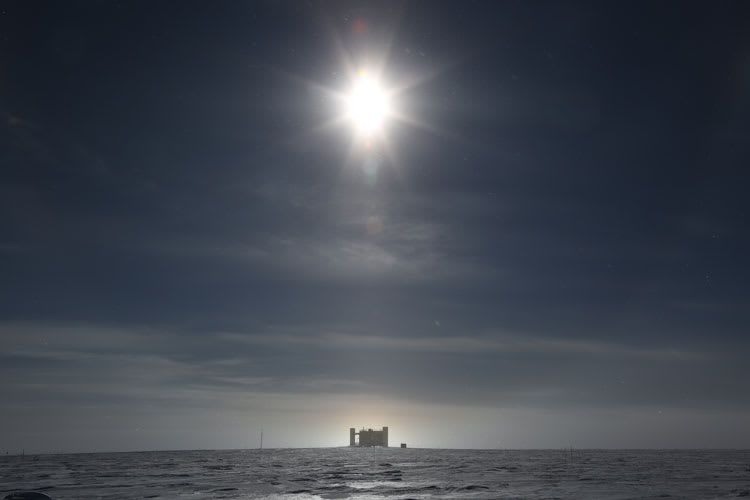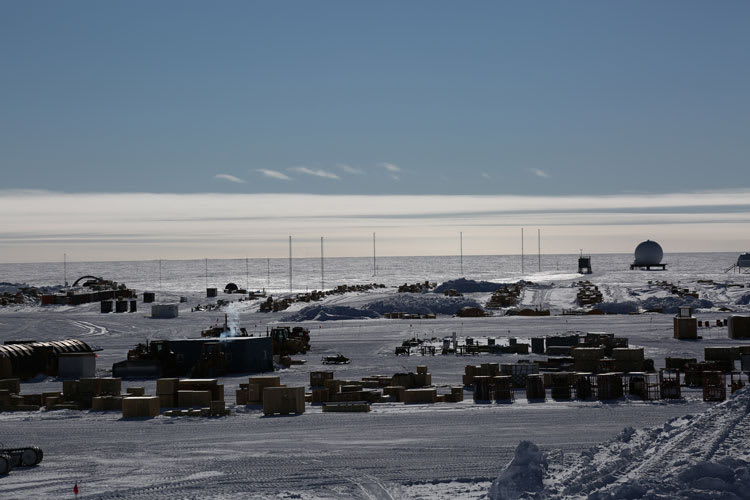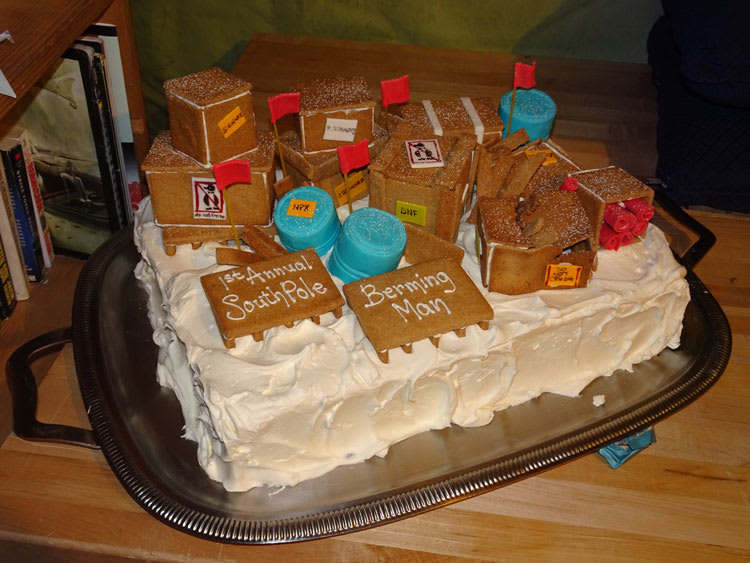
So many things to do, so little time. (Or, as Willy Wonka would say, “So much time and so little to see.”) At any rate, it was a rather busy week at the Pole. Besides people coming and going, there was the first IceCube webcast of the season, with a school from Wisconsin and two schools from Greece joining the event. An unexpected fire drill was also held last week. It turned out to be a timely drill, since the next day a genuine fire alarm sounded, triggered by a faulty oxygen sensor, not by an actual fire. Clouds got into the action, too, providing a glimpse of a phenomenon not often visible in the sky—the Kelvin–Helmholtz instability. You can see this in the few wispy clouds above the solid cloud band in the image below, although a web search will certainly produce more distinct images (for a nice simulation of the instability, look here).
But there was even more. Saturday was devoted to clearing out the berms. The berms at the Pole provide long-term storage for items that aren’t in current use yet need to be stored. But because of the drifting snow, they need to be cleared regularly to maintain access. Sometimes, the snow-clearing uncovers buried treasure. Recently, some 7-year-old chocolate and mouthwash was among the bounty. This year, they celebrated the berm clearing with a fancy cake, inaugurating it as an annual event. Finally, as if that wasn’t enough excitement, IceCube winterover Christian got to end his week with a daytrip by plane to AGAP South, a field camp in eastern Antarctica, to rescue air-dropped fuel drums from being buried in the snow. The bottom image shows their plane at the camp, with not much other than the blue sky and the white snow on the ground as far as the eye can see.


